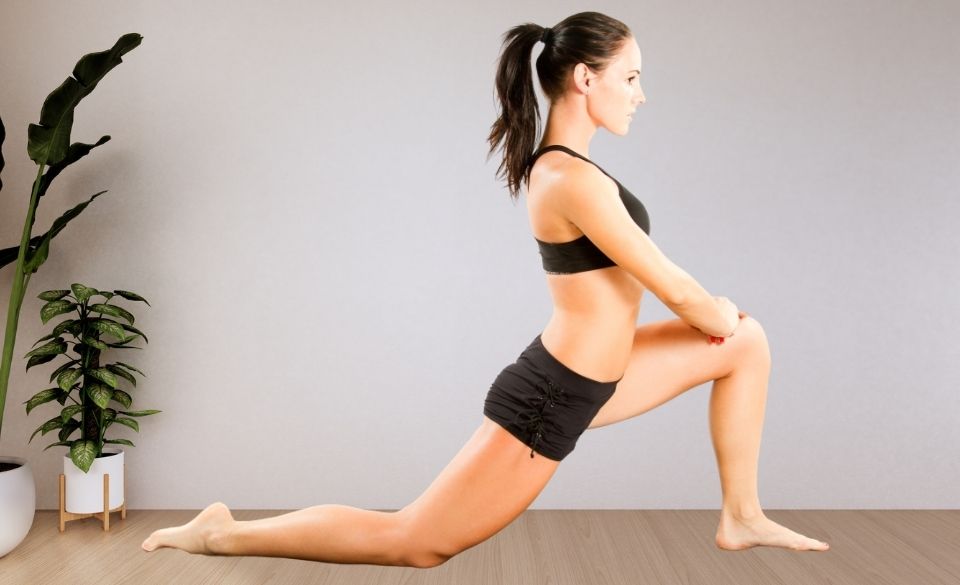
How To Do A Runners Lunge Correctly – UPDATED 2022
Page Contents
A runners lunge is a stretching and strengthening exercise for the legs. It is often used by runners to improve flexibility and prevent injuries. The runners lunge is widely used by cyclists, rowers, and gym enthusiasts too.
If you are looking for an exercise that can strengthen the muscles and improve flexibility without heading to the gym, the runners lunge is a great alternative. It can be performed anywhere and is a perfect alternative to a squat if you don’t have time to head to the gym. Alternatively, it is also a great exercise for the hamstrings, knees, quadriceps, and ankles.
In this article, we discuss:
– What is a runners lunge?
– Benefits of a Runners lunge
– How to do a runners lunge?
– Should runners do lunges?
What Is A Runners Lunge
The runners lunge is a stretch/strengthening exercise that targets the hip flexors, hamstrings, IT bands (Iliotibial Band), and quadriceps muscles. It is also known in the yoga world as a crescent lunge, and it is widely used in yoga as a warm-up pose before more intense poses.
While the runners lunge uses bodyweight as a form of resistance, dumbbells and barbells can also be added for more intensity. However, if you are a runner with constant knee issues, you may want to stay away from adding more resistance until your knees are healthy.
Even though it is called a runners lunge, you don’t need to be a runner to take advantage of the exercise. Many other athletes like cyclists, triathletes, rowers, and gym enthusiasts use this exercise to strengthen and stretch the IT bands, hamstrings, quadriceps, and gluteal muscles.
How To Do Runner’s Lunges
Once you know what a runners lunge is, you will need to know how to perform the exercise correctly. To do this exercise, start by performing 1-3 sets of 10-15 seconds on each leg. Once you are comfortable with the technique, you can then increase this to 30 seconds and even add some light weight as resistance.
How to do the runners lunge:
1. Start by being on all fours with your knees and feet in contact with the floor. Make sure your hips are over your knees.
2. Place your hands slightly wider than your shoulders.
3. Rotate your shoulders outwards to activate your lats
4. Straighten your legs so your knees lift off the ground. You should then end up in a plank position.
5. Make sure your legs are hip-width apart.
6. Engage your core and make sure your ribs are down and your pelvis slightly tucked.
7. Squeeze your quadriceps and glute muscles.
8. While keeping the body aligned, bring your right foot up and towards your hands. The foot should then sit between your hands with your knee bent at 90 degrees and the right foot flat on the ground. Your left leg can either stay fully extended or slightly bent.
9. Keep your weight evenly distributed and hold the stretch for 10-30 seconds
10. Alternate sides and repeat as desired.
Benefits Of Doing Runner’s Lunges
There are many benefits of doing runners lunges, regardless if you are an elite or amateur runner. It is a great way to warm up for a run and keep the body flexible and supple between training sessions.
Since the exercise stretches your ankles, calves, hamstrings, quadriceps, and groin, it makes it a great warm-up tool before a hard gym workout or interval session. It can also be used between sessions to promote faster muscle recovery.
Since running requires balance and flexibility, it can help strengthen the glute muscles, ankles, and quadriceps. This means it can help prevent injuries caused by a lack of flexibility or balance.
While it won’t heal chronic pain, it can help relieve it by opening up the runners hips, lower back, legs, and sciatica nerve.
Should A Runner Do Lunges?
Lunges should be added regularly into all running training plans, as they can help prevent injuries by improving lower body strength and stability. Lunges can also help to improve one’s hip range of motion. This is important as most runners have tight hips, which can cause injury and affect their ability to perform or train at high levels.
If you are unsure how to do the runners lunge correctly, start by learning a basic lunge.
How to Do Lunges
1. Keep your back straight and engage your core. Your shoulders, hips, and knees should all be straight.
2. Keep your chest up and take a step forward with one leg.
3. Once your foot hits the ground, make sure your knee stays behind the toes and your quadricep is parallel to the ground. Your other knee should bend and drop towards the floor but shouldn’t touch.
4. Keep balance and posture during this movement before pushing back on the front leg to the starting position.
5. Repeat with the other leg and then alternate with the two.
While this is a basic lunge, it can place extra pressure on the knees. So, if you are struggling with knee injuries from running, make sure you only perform these if it doesn’t cause you pain.
Alternatively, if you find a basic lunge too easy, you can increase resistance by holding a dumbbell in each hand or using a barbell. Just make sure you start with a small amount of weight before progressing to heavier weights.
If you are unsure how to perform the runners lunge or basic lunge, talk to a personal trainer or running coach. They can help take you through each part of the exercise and help you choose the right amount of weight if you want more resistance.



